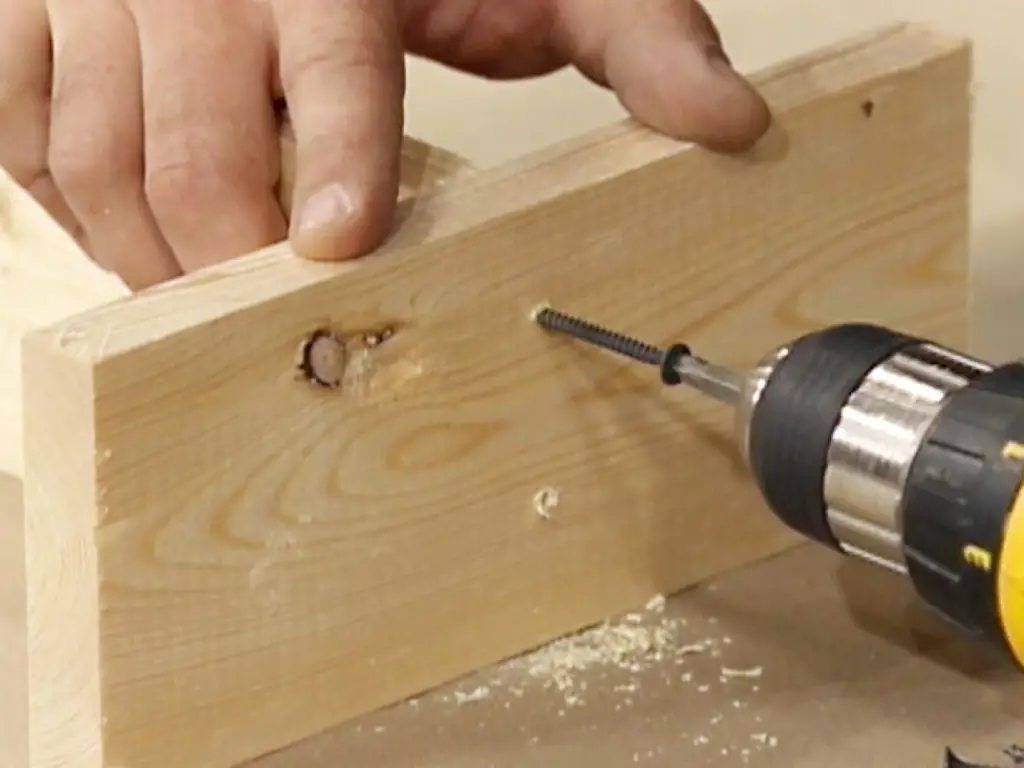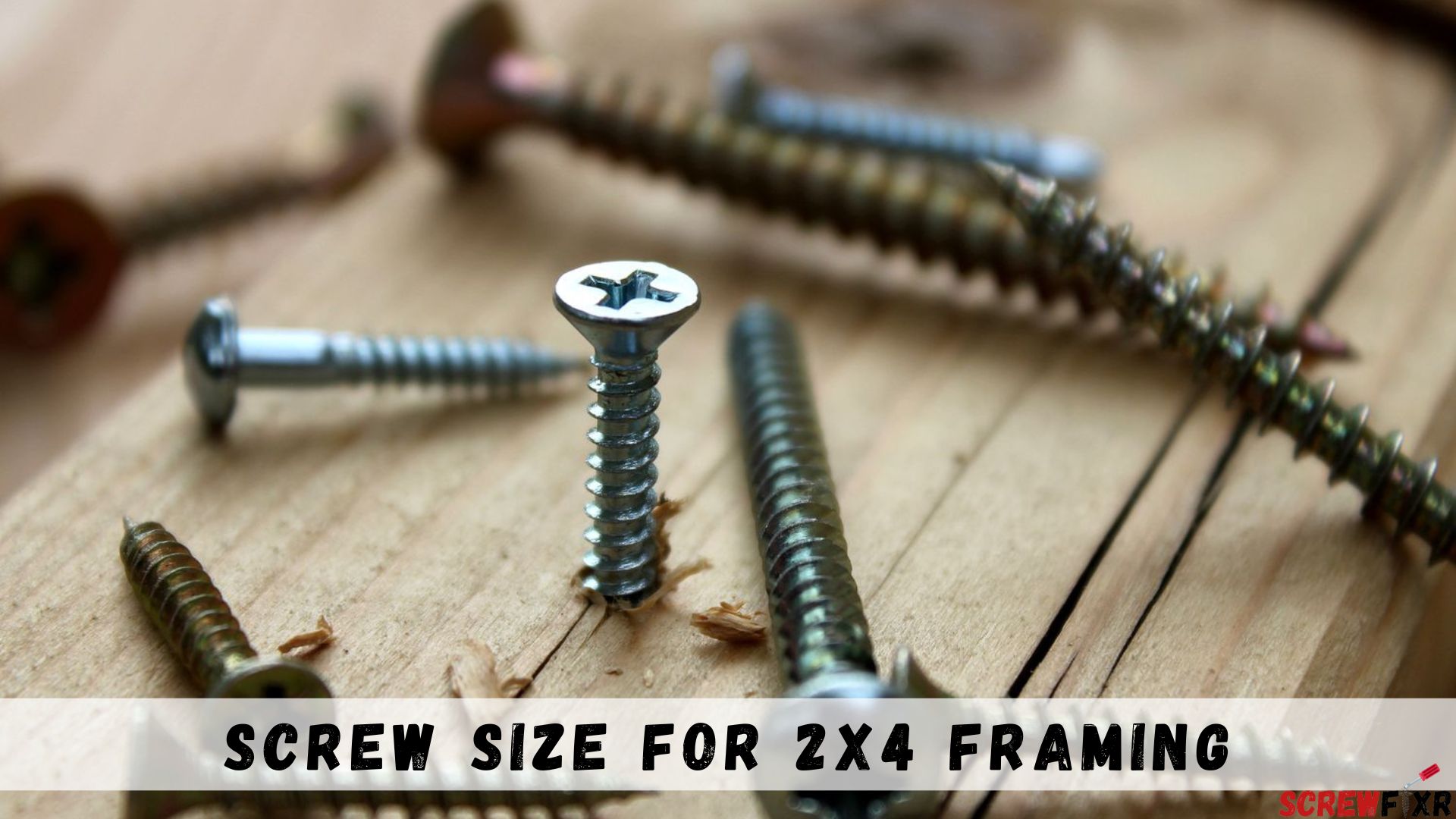When it comes to building or renovating, getting the right screw size for 2×4 framing is crucial. Your project’s stability and durability hinge on this seemingly simple choice. In this comprehensive guide, we’ll delve deep into the world of screw sizes for 2×4 framing. From understanding the basics to answering common questions, we’ve got you covered.
Understanding 2×4 Framing

2×4 Framing in Construction
Before we dive into the intricacies of screw size selection, it’s essential to grasp the core concept of 2×4 framing in construction.
Definition: 2×4 framing refers to the practice of using standard 2×4 lumber as the primary material for creating the structural framework of a building. These pieces of lumber, typically measuring 2 inches by 4 inches (hence the name), serve as the building blocks upon which the entire structure is erected.
Common Applications
Understanding 2×4 framing is pivotal, as it forms the backbone of countless construction projects. Here are some common applications:
- Residential Construction: 2×4 framing is the go-to choice for framing walls, floors, and roofs in residential homes. It provides a sturdy and cost-effective solution for creating the framework for single-family houses, apartments, and townhomes.
- Interior Walls: When it comes to dividing interior spaces, 2×4 framing is invaluable. It allows for the creation of non-load-bearing walls, offering flexibility in room layout and design.
- Exterior Walls: 2×4 framing is also used in constructing the exterior walls of residential and some commercial buildings. It provides a solid structure to attach siding, insulation, and windows.
- Door and Window Framing: The framing around doors and windows is typically done with 2x4s, providing a stable framework for these essential building elements.
- Renovation and Remodeling: When renovating or expanding existing structures, 2×4 framing is often used to modify or extend walls, creating additional rooms or spaces.
- Commercial Buildings: While larger commercial structures may use heavier framing, 2x4s are still commonly employed for interior partitions and non-load-bearing walls in commercial construction.
In essence, 2×4 framing is the workhorse of the construction world, offering versatility, cost-effectiveness, and ease of use. Its applications are as diverse as the structures it supports, making it an indispensable element in the construction industry. In the sections that follow, we’ll explore how choosing the right screw size plays a pivotal role in ensuring the strength and stability of these 2×4 structures.
Types of Screws for Framing

Choosing the right screw for 2×4 framing is not a one-size-fits-all affair. Different construction scenarios demand different types of screws, each designed with specific features to ensure optimal performance. In this section, we’ll introduce you to the variety of screws suitable for 2×4 framing, providing an overview of their unique characteristics and applications.
Wood Screws
Wood screws, as the name suggests, are specifically designed for use with wood materials. They are one of the most common types of screws used in framing due to their reliability and ease of use.
Applications:
- General Framing: Wood screws are suitable for general framing purposes, such as attaching 2x4s together to form a stable structure.
- Cabinetry: They are also used in woodworking projects and cabinetry where precision and strength are essential.
- Decking: Wood screws with corrosion-resistant coatings can be used in outdoor decking projects to secure wooden boards to the frame.
Deck Screws
Deck screws are engineered to withstand outdoor conditions, making them an excellent choice for projects where 2×4 framing is exposed to the elements.
Applications:
- Deck Construction: Deck screws are the preferred choice for attaching deck boards to the 2×4 frame, ensuring a secure and long-lasting deck structure.
- Fencing: They are also used in fencing projects, providing the necessary strength and weather resistance.
Drywall Screws
Drywall screws, though primarily designed for drywall installation, have found their place in 2×4 framing due to their versatility and sharp threads.
Applications:
- Interior Walls: Drywall screws are used to secure drywall sheets to the 2×4 framing of interior walls.
- Partition Walls: They are also suitable for creating partition walls within a structure.
- Temporary Structures: In some cases, drywall screws are used for temporary framing or when a quick, temporary solution is required.
Structural Screws
Structural screws are engineered specifically for heavy-duty applications and are designed to provide maximum strength and stability.
Applications:
- Load-Bearing Structures: Structural screws are essential for projects where the 2×4 framing bears significant loads, such as in the construction of load-bearing walls and beams.
- Outdoor Structures: They are suitable for outdoor structures like pergolas and carports, where durability is crucial.
- Foundation Work: In some cases, structural screws are used in foundation work, ensuring a solid connection between the foundation and the framing.
Understanding the distinctions among these screw types is crucial for selecting the right one for your 2×4 framing project. In the following sections, we will explore the factors to consider when making this important decision and delve into the specifics of screw size for optimal performance.
Factors to Consider
When it comes to choosing the right screw size for 2×4 framing, several critical factors come into play. Each factor plays a pivotal role in determining the screw’s performance and the overall stability of your construction project. Let’s examine these aspects thoroughly:
Load-Bearing Capacity
Load-Bearing Capacity Defined: Load-bearing capacity refers to the maximum weight or load that a 2×4 framing structure can support without experiencing deformation or failure. It’s a fundamental consideration in any construction project.
Factors Influencing Load-Bearing Capacity:
- Screw Size: The size and diameter of the screw play a direct role in determining its load-bearing capacity. Larger screws typically offer greater strength.
- Screw Material: Different screw materials have varying load-bearing capacities. Structural screws, for example, are designed for heavy loads and offer superior strength.
- Spacing of Screws: The spacing between screws along a 2×4 also affects load-bearing capacity. Properly spaced screws distribute the load more effectively.
- Fastening Technique: The way screws are driven into the wood, including pre-drilling and countersinking, can impact their ability to bear loads without damaging the wood.
Material Compatibility
Material Compatibility Defined: The type of wood you are using for your 2×4 framing project must align with the screw’s properties. Compatibility ensures a secure and long-lasting connection.
Considerations for Material Compatibility:
- Wood Type: Different woods have varying densities and hardness levels. Ensure the chosen screw is suitable for the specific wood type used in your project.
- Corrosion Resistance: If your 2×4 framing is exposed to outdoor elements or moisture, consider screws with corrosion-resistant coatings to prevent rust and wood decay.
- Thread Design: The screw’s thread design should be well-suited to the wood type. Coarse threads are typically better for softwoods, while fine threads may be more suitable for hardwoods.
Length of Screw
Screw Length Defined: The length of the screw is crucial as it determines how deeply it penetrates the 2×4 and secures the joint. Using the right length is essential to ensure a strong connection without damaging the wood.
Factors Influencing Screw Length:
- Thickness of Material: The length of the screw should be sufficient to pass through the thickness of the 2×4 and provide a secure grip.
- Additional Attachments: If you’re attaching additional materials or layers, consider the combined thickness when selecting screw length.
- Screw Head Type: Different screw head types (e.g., countersunk, flat, or pan) may require different lengths to achieve the desired flush or raised finish.
Thread Type
Thread Type Defined: The threading on a screw affects its grip and holding power within the 2×4 framing. Choosing the right thread type is essential for secure fastening.
Considerations for Thread Type:
- Coarse Threads: Coarse-threaded screws are ideal for softwoods like pine or cedar. They provide a stronger grip and better resistance to pullout.
- Fine Threads: Fine-threaded screws are suitable for hardwoods like oak or maple, offering better-holding power in denser wood.
- Self-Tapping Screws: Self-tapping screws have a sharp tip that can pierce wood without the need for pre-drilling, making them convenient for some applications.
- Understanding these factors and their interplay is key to selecting the right screw size for 2×4 framing.
Screw Sizes for 2×4 Framing

Selecting the right screw size is a critical aspect of ensuring the stability and durability of your 2×4 framing projects. In this guide, we provide detailed information on recommended screw sizes, including screw diameter, length, and type, tailored to various 2×4 framing applications:
- General Framing
Screw Diameter: 1/4 inch
Screw Length: 3 inches
Screw Type: Wood Screws or Structural Screws
- Interior Wall Partition
Screw Diameter: 1/4 inch
Screw Length: 2 1/2 inches
Screw Type: Drywall Screws
- Exterior Wall Construction
Screw Diameter: 5/16 inch
Screw Length: 3 inches
Screw Type: Deck Screws or Structural Screws
- Door and Window Framing
Screw Diameter: 1/4 inch
Screw Length: 3 inches
Screw Type: Wood Screws or Structural Screws
- Decking Projects
Screw Diameter: 1/4 inch
Screw Length: 3 inches
Screw Type: Deck Screws
- Load-Bearing Structures
Screw Diameter: 5/16 inch
Screw Length: 4 inches
Screw Type: Structural Screws
- Outdoor Structures (e.g., Pergolas)
Screw Diameter: 5/16 inch
Screw Length: 3 inches
Screw Type: Deck Screws or Structural Screws
Please note that these recommendations serve as general guidelines. The specific screw size you choose may depend on factors like load-bearing requirements, wood type, and local building codes. Always consult with a construction professional or engineer when in doubt to ensure your 2×4 framing is secure and built to last.
Frequently Asked Questions

How do I prevent screws from splitting the wood?
To prevent splitting, drill pilot holes slightly smaller than the screw’s diameter before driving it into the wood. This creates a pathway for the screw without causing cracks.
Can I use regular screws for 2×4 framing?
While it’s possible, it’s not recommended. Regular screws lack the thread design and strength needed for secure framing. Using the wrong screws can compromise your project’s structural integrity.
Do I need to pre-drill for every screw?
Pre-drilling is essential, especially near the edges of the 2x4s. It minimizes the risk of splitting and ensures a more precise alignment of the screws.
What’s the ideal screw spacing for 2×4 framing?
Typically, screws should be spaced 16 inches apart for standard 2×4 framing. However, consult your local building codes, as requirements may vary.
Should I use screws or nails for 2×4 framing?
While both are viable options, screws generally offer better-holding power and are less likely to loosen over time. Nails, on the other hand, maybe quicker to install but are more prone to withdrawal.
How do I prevent rust on screws used for outdoor projects?
To prevent rust, opt for screws made of corrosion-resistant materials like stainless steel or use galvanized screws. Regularly inspect and maintain your outdoor structures to catch any signs of corrosion early.
Conclusion
Selecting the right screw size for 2×4 framing is a crucial step in any construction project. It ensures the structural integrity and longevity of your creation. By considering factors like load-bearing capacity, wood type, and screw material, you can confidently choose the perfect screws for your needs.
Remember to calculate the screw length carefully and choose the appropriate screw type, whether it’s wood screws, deck screws, or structural screws. Pre-drilling and following local building codes are essential steps to ensure a successful framing project.


